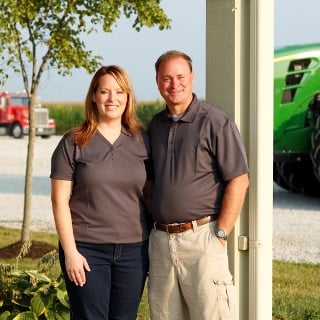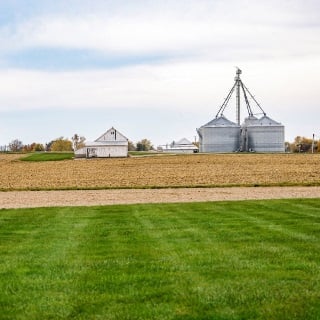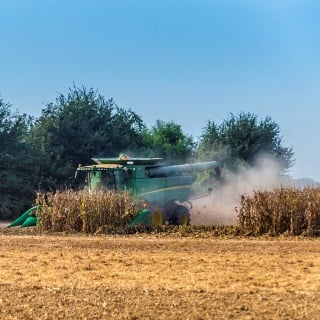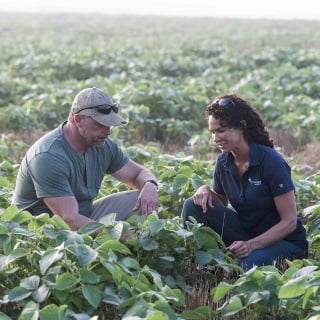From sun up to sun down, farmers tend to the plants and animals that feed us all. But even with the abundance found on farms today, some families in underserved communities may not be able to justify the cost of purchasing fruits and vegetables, or fresh produce simply isn’t available in the neighborhoods where they live. To get the fresh, healthy food farmers grow into the homes that need it most, farmers are partnering with food banks through the Farms to Food Banks* program.
Farms to Food Banks exists to direct surplus and donated agriculture products from farmers to food banks. The program partners with agencies to facilitate all the steps needed to get food on people’s tables, from using volunteers to harvest produce, to processing and distributing it to families in need through a network of food banks. The United States Department of Agriculture estimates that nearly 13 percent of U.S. households experienced food insecurity in 2015—meaning they lacked access to enough food for a healthy lifestyle. Farms to Food Banks is a powerful way for farmers to connect their hard work with the communities where they live and ensure everyone has access to the nutritious food they grow.
Communities and farmers
“Food banks are primarily known to provide nonperishable items like canned goods,” says Tamara Sandberg, the executive director of the Kentucky Association of Food Banks. “Farms to Food Banks more than tripled the amount of fresh produce available since the program began Kentucky just a few years ago. It has allowed us to reach more than 300 local charitable organizations and provide them with fresh produce to distribute. It’s helping us do a better job of making sure the people who come to food banks have healthy food to eat.”
In addition to serving the local communities, farmers also see benefits. While the majority of farmers generously donate their produce, Farms to Food Banks offers a modest reimbursement for costs associated with picking and distributing the produce. “When farmers have excess produce or produce with minor blemishes or size discrepancies that their buyers reject, we’re happy to take that,” says Sandberg. “We offer to pay them just enough to help cover the cost of picking, packing and transporting it to the food bank.”
Mary Courtney, a farmer from Kentucky who has been involved with Farms to Food Banks since 2009, says the program allows her to break even on produce that she would otherwise throw away. “Oftentimes, we have to continue harvesting our produce whether we’re selling it or not. Farms to Food Banks is a home for the produce we cannot sell, and by participating in this program, we know that we’re providing food to people who need it instead of turning it into compost.”
For Erin Wright, the director of the Farms to Food Banks program for the Ohio Association of Food Banks, the program comes back to farmers being able to feed their communities. “No farmer likes to spend 45 days on tomatoes and then have the vendors say they don’t need that much. They end up just plowing them under. Farmers go out to their fields every day, they grow vegetables and they want people to eat them.”
Volunteers are the difference
Farms to Food Banks relies heavily on volunteer participation to make it work. This includes the farmers who choose to be part of the program, as well as partner agencies and companies that send employees to harvest fields. Linda Hamilton, the chief executive officer of the West Ohio Food Bank in Lima, Ohio, explains that volunteers are crucial. “As we see more and more volunteers across all the communities the West Ohio Food Bank serves, we really start to see the greater impact for the people who need it most.”
This year, agricultural lender Farm Credit Mid-America sent almost 500 employee volunteers to 37 locations, including packaging facilities, food banks and farms throughout Indiana, Ohio, Kentucky and Tennessee. Altogether, Farm Credit volunteers packaged more than 42,000 pounds of produce and harvested nearly 20,000 pounds of fruits and vegetables over the course of three months.
“Our mission as a lender in rural America is to take care of agriculture and the agriculture community,” says Mark Tangeman, a senior financial officer from Ohio who volunteered at a Farm Credit Mid-America Farms to Food Banks event. “When we live out our mission and see everything come full circle like it does during our involvement with Farms to Food Banks, it makes you feel really proud and connected.”
Hamilton sees the program working as a cohesive partnership that benefits all parties to help those in need. “All of our partnerships are essential—whether they are with our farmers, our food manufacturers, our volunteers or our grocery stores. It really is a collective effort when we pull together for a common goal. That mission is getting nutritious food onto the plates of those in need.”
“It’s very humbling to work for this program and see it from the farmers’ perspective,” says Wright. “They spend so much time growing beautiful produce and it’s their point of pride. They don’t want to see it go to waste, they want to see people eat the food they grow. When that produce actually gets distributed to families who can’t afford it, it’s powerful. It’s really amazing to see the whole process work.”
*The program is called Ohio Ag Clearance Program in Ohio and Farm to Families in Tennessee.





